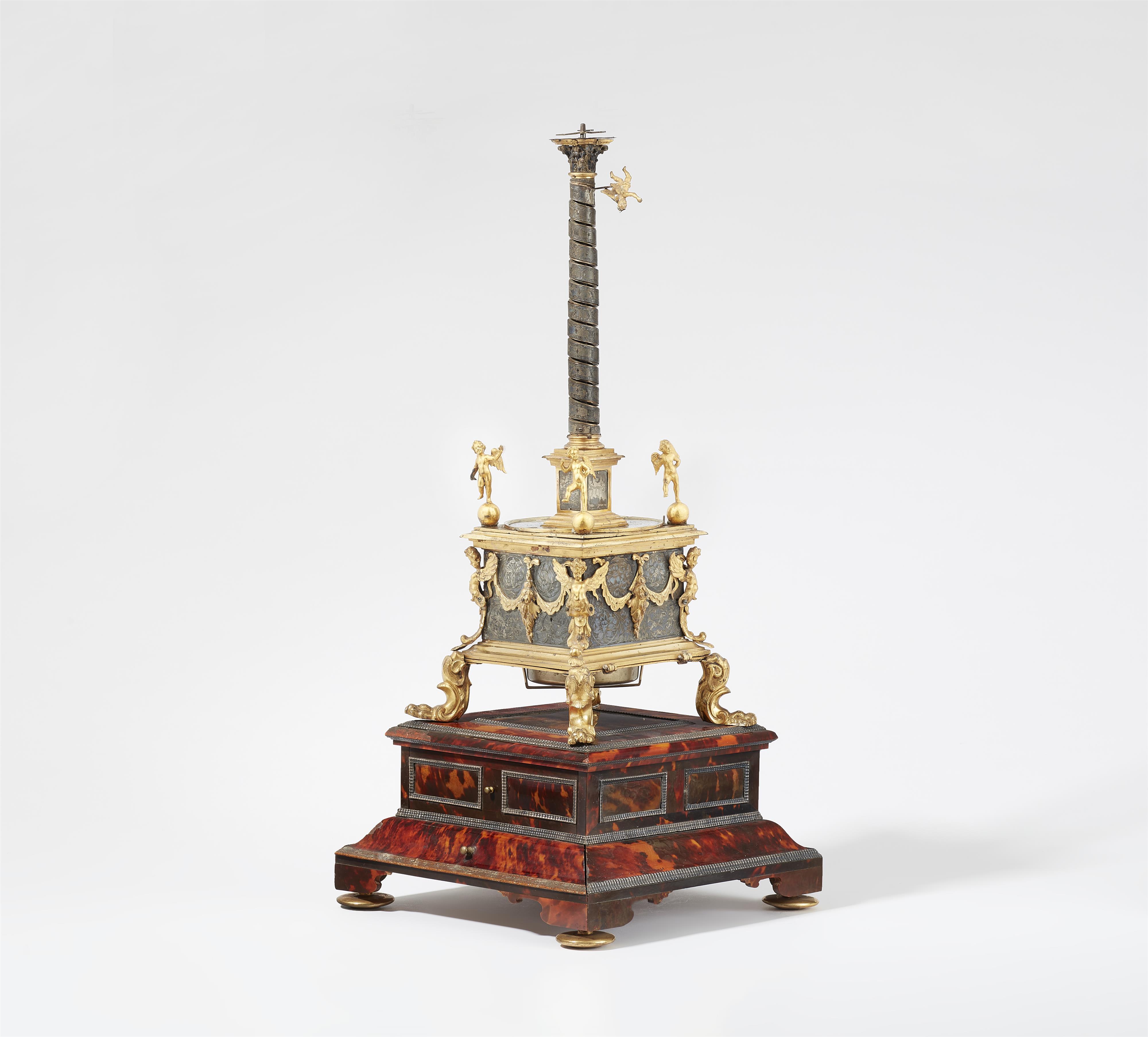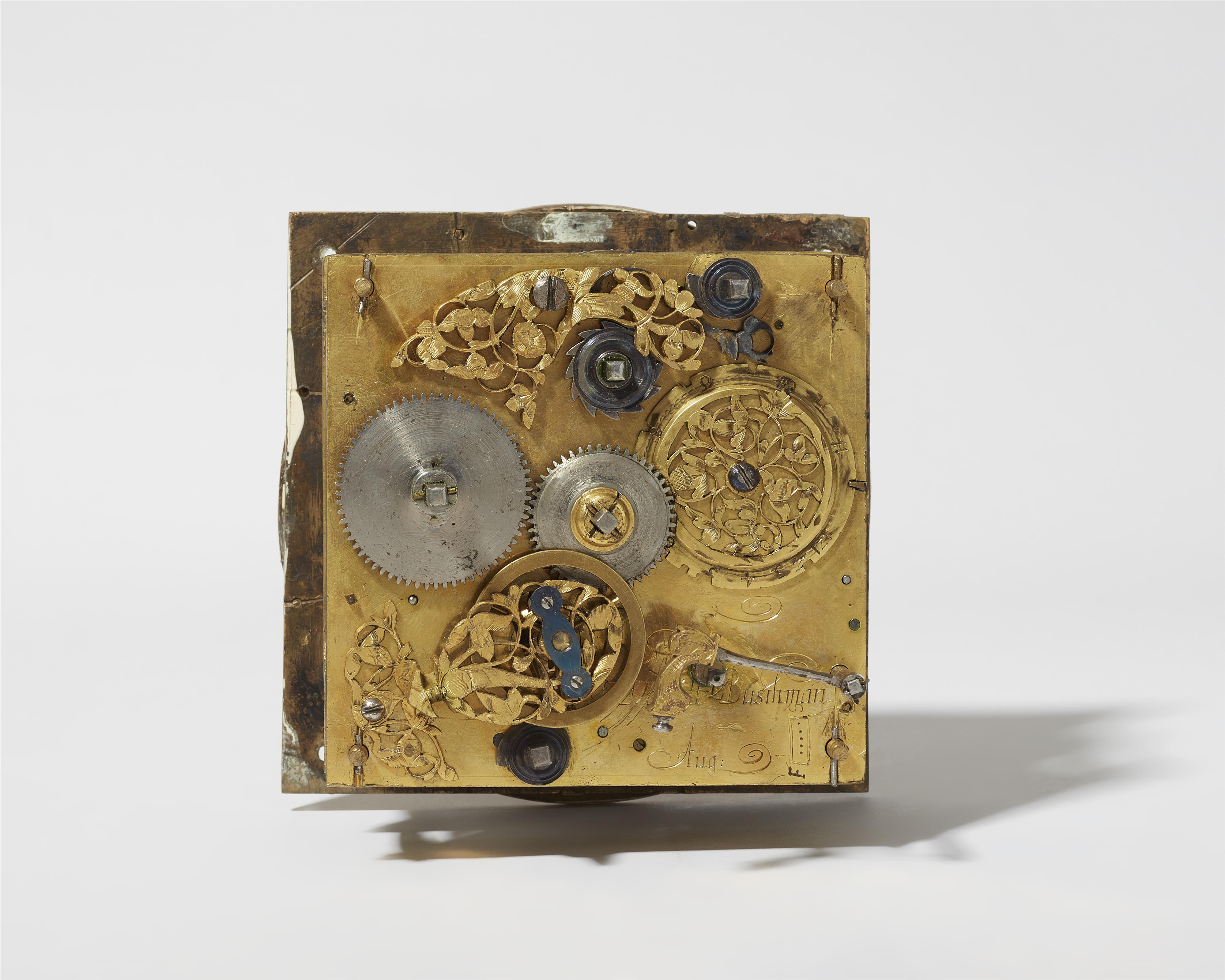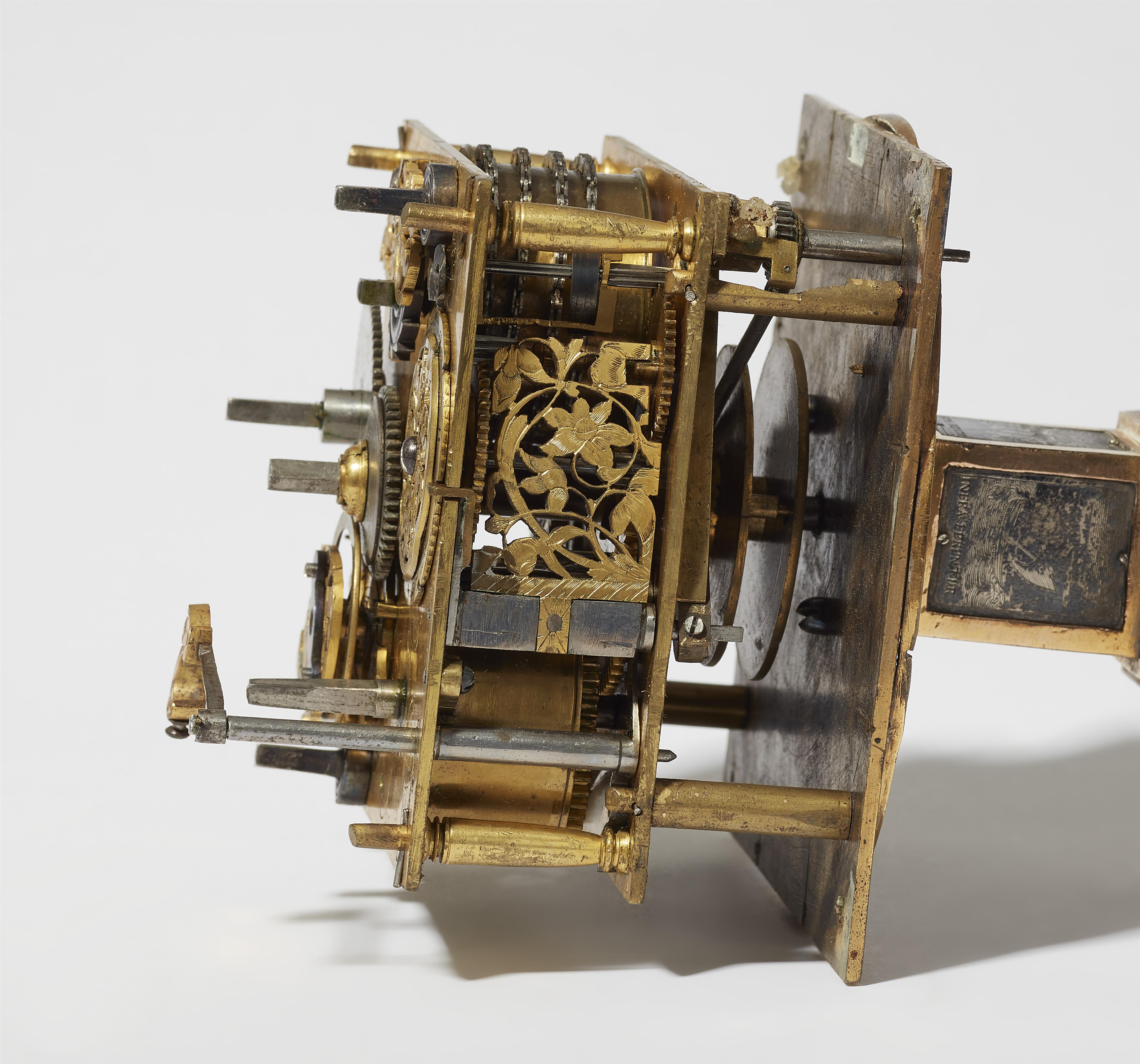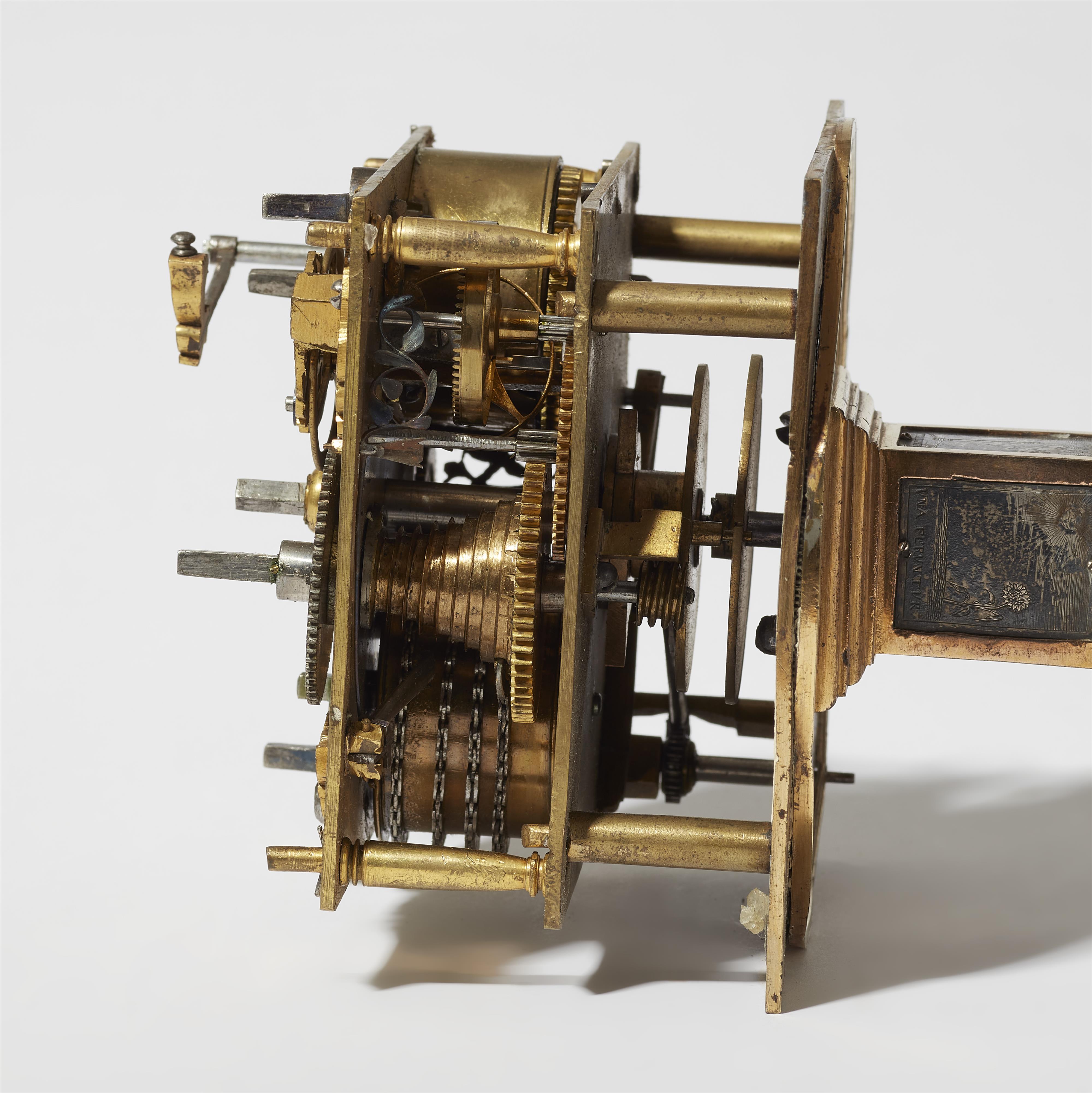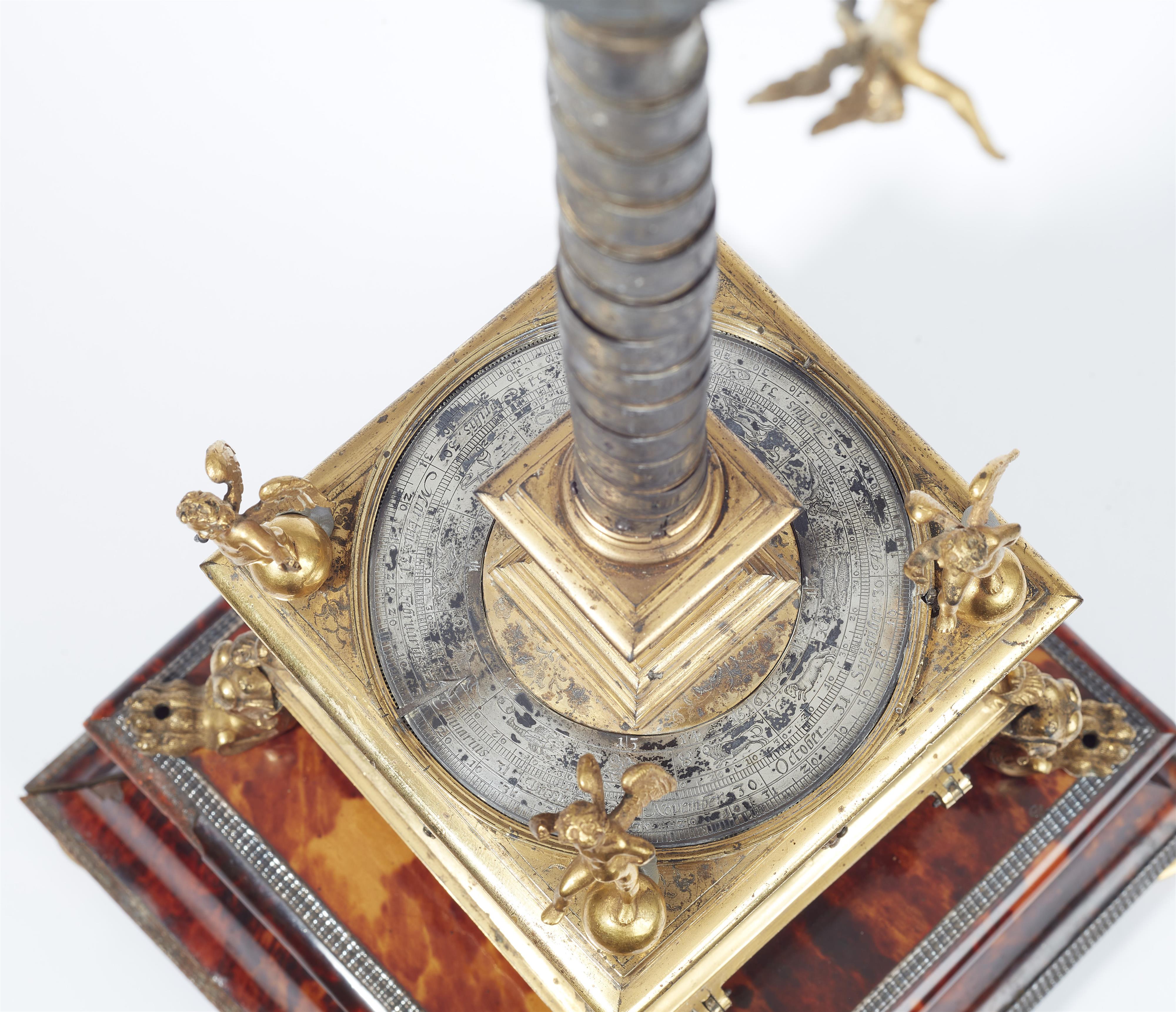A museum quality Augsburg column clock
Gilt and silver-plated brass/bronze, blued steel, cast iron escapement. Day-running with chain and fusee, striking via lock plate with pierced tendril decor, hourly striking to a bell. The movement housed in a silver-plated cuboid case with foliate engravings and ormolu appliques of winged herms at the angles and festoons. With silver-plated aperture ring with indicator for the months, zodiac sign and date above. The column plinth inset with four silver-plated plaques with depictions of the sun engraved "CONTRA FERVNTVR", "VNA FERVNTVR", "SVPRA FERVNTVR" and "INFRA FERVNTVR". The round column entwined by a spiralling band with tiny figures of Cupid indicating the hours. The foliate capital with a small dial indicating the hours in Roman numerals. Engraved on the plate "Davidt Buschmann Aug:". Damage to the upper hour indicator on the column, the four Cupids loose, the attribute and one foot missing, minor losses to the tortoiseshell. On a softwood stand veneered in tortoiseshell and with ebonised wood mountings, total H 58.2, stand W 26.5, D 26.5 cm. With glazed walnut wood transport case with wrought iron mountings H 69, W 33, D 33 cm.
David Buschmann, around 1660 - 64.
David Buschmann (1626 - 1701) came from a family that had been producing small clocks in Augsburg since 1536. His training included not only the manufacture of the timepiece but also the associated and often complicated mechanics of the special cases. His ancestor, the first Kaspar II Buschmann, had already been granted a blacksmith's licence which enabled him to build his own cases. But in David's time, the workshop, like many other Augsburg art businesses, must have worked closely with craftsmen and studios, as well as with gilders, and perhaps also with bronze casters and sculptors for the appliques.
The Buschmann family had developed a certain range in which individual objects could be produced repeatedly with minor optical and functional changes. This column clock exists, for example, in another, more monumental version, published by Klaus Maurice on plate VII. The author also mentions that David Buschmann delivered an "artful clock with a small silver child" to Duke August the Younger of Brunswick-Lüneburg in 1663. This may still be a copy of the column clock, which may still be in family possession. And we know from the table clock published by Maurice in the identical cuboid case that this simplified model was one of the standard items produced in his workshop. The double hour indicators, here around the column and on top of it, are also considered to be an invention of the Buschmann family, and were used several times.
In the course of David's career, the requirement profile for the products changed: the metal cases for table clocks and sculptural clocks were successively replaced by wooden veneered cases with brass or silver mountings, which necessitated additional collaboration with a cabinetmaker and a silversmith. Thus, like the second example published by Maurice, this column clock stands on a base finished with tortoiseshell and designed like a miniature piece of furniture with its two front drawers. This type of clock and calendar mechanism on a wooden pedestal marks the change in taste towards cabinet furniture with integrated clock movements for which Augsburg became famous at the end of the 17th century.
Provenance
From a Rhenish private collection.
Literature
On the Buschmann family of clockmakers, see Maurice, Die deutsche Räderuhr. Zur Kunst und Technik des mechanischen Zeitmessers im deutschen Sprachraum, vol. I, Munich 1976, pp. 176 ff, on David Buschmann p. 180 and pl. VII. His identically designed table clock (Kunsthistorisches Museum Vienna) in vol. II, fig. 600.
The similar column clock by Johann Georg Mayr of Munich, c. 1670, also in Maurice, vol. II, fig. 690.

